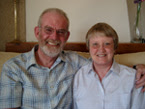Next stop was the Hotel Urgeiriça near Nelas, 300 km from Estoril northwards and roughly half way across Portugal being around 50 km from the Atlantic ocean. The hotel had been founded by an Englishman and has had strong connections with famous visitors from England.
We enjoyed 3 great days visiting the surrounding area from this location. The first, to the city of Viseu a short distance to the north...
...and, after the hustle and bustle of Lisbon how nice it was to come to a typical Portuguese city which has existed since the Celtic period before Roman times...
...with a genuine laid back, tranquil atmosphere.
The Cathedral de Santa Maria de Viseu is a national monument which started being built in the 12 century and is a mixture of different styles of the period. It stands in a large square opposite the...
...Misericórdia Church of Viseu, originally built in the 16th century and then rebuilt in the 18th.
To say this city is most picturesque is an understatement.
The following day we went to Seia to the Museu Nacional Do Pão, the National Bread Museum,...
...which demonstrated the worldwide importance of this basic food and gave examples of regional variations.
The museum itself is tucked away in a small hilltop corner of the town with great views.
Having learned all about the traditional varieties we had to have a sandwich in their cafe...
...and after, in their shop, found tins of sardines emblazoned with different dates. The one I'm holding is significant - to me at least.
From Seia it was an interesting drive to Torre the highest point in mainland Portugal, 1,993 metres above sea level. In the photo above you can see the 7 metre high structure which marks the exact spot. During the winter months this area is a ski resort.
The excursion on the 3rd day was to the city of Coimbra, the former capital of the country before Lisbon,...
...and to the Portugal dos Pequenitos exhibition...
...which displays scaled down buildings to be found throughout the country as well as demonstrating the history of costume through the ages...
...and shows the importance of the role of the Portuguese around the world.
From there it was a walk up the steep, narrow streets to the University at the top of the hill overlooking the city where Margaret stands next to Minerva, the Roman goddess of wisdom, inlaid in the cobblestone pavement.
The University was founded in the 13th century and has parts built on during each of the following centuries - the tower, for example, was built between 1728 and 1733 and replaced the one from the sixteen hundreds.
In the photo above Margaret is standing at the top of the steps of the Via Latina, built 1772-1777, named after the statutory language of the Academia.
Inside Saint Michael's Chapel, built late 15th to early 16th century, the altar is dedicated to Our Lady of Light, the patron saint of students.
One of the most important features of the University is the Old (Joanine) Library first known as the "Book House" commissioned in 1717 by King João V. For some reason no photos are allowed - they don't want you to remember your visit! The original books still exist and are protected by bats which live in the library and eat the insects which would attack the books.
Back to our hotel and the wonderful restaurant...
...for another superb evening meal with a bottle of excellent Portuguese wine.
To see the slideshow/video I made of this part of the holiday, click HERE.
































































